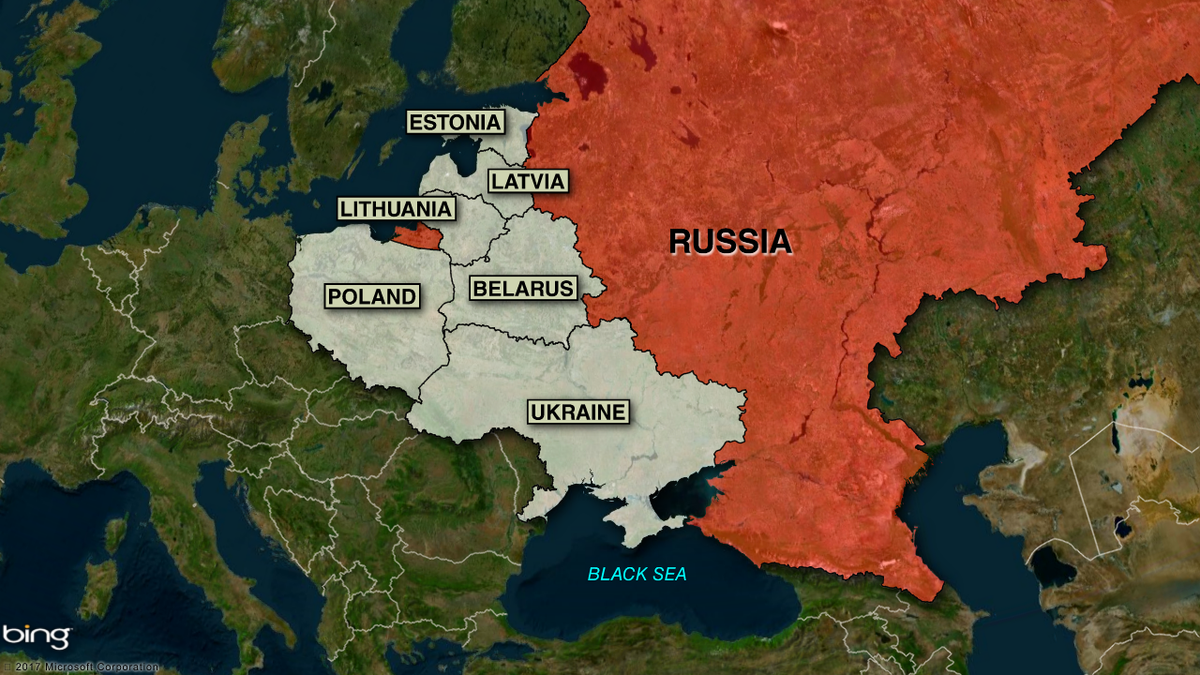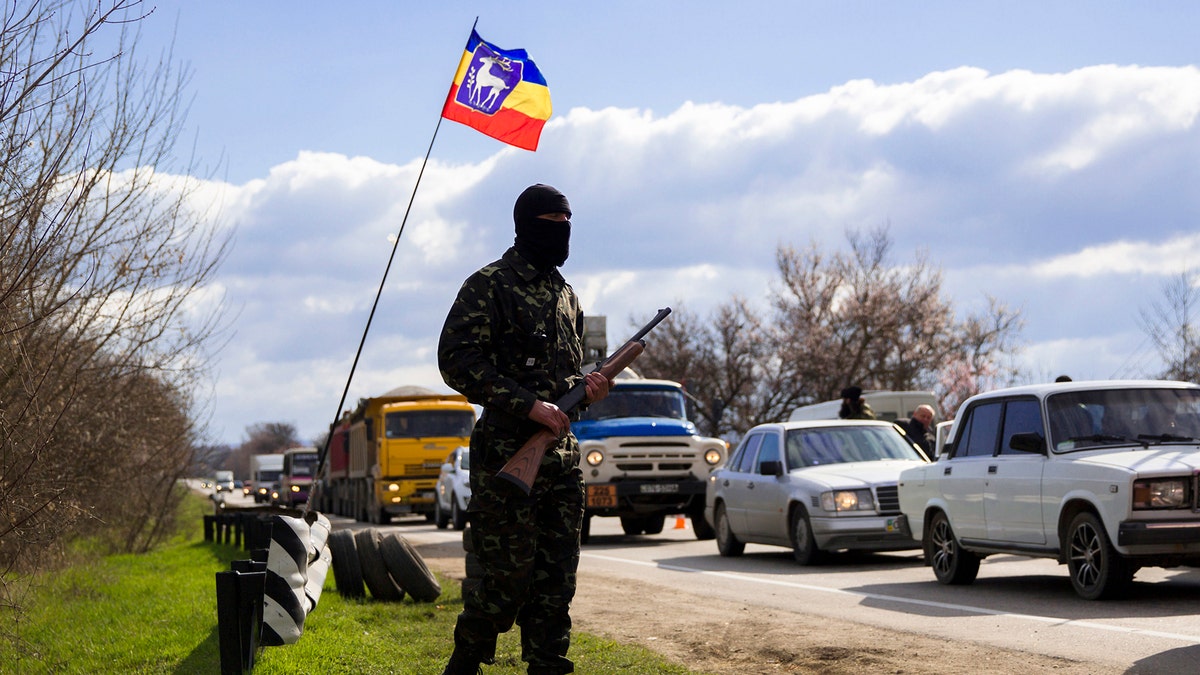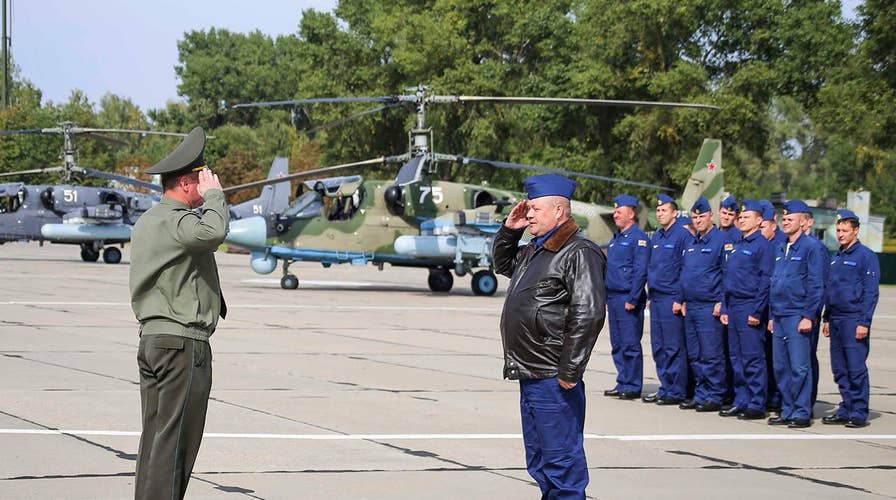Russia's war games spark anxiety in the Baltics
The Pentagon is concerned Moscow might use the exercise to build up forces in Belarus; reports say as many as 100,000 Russian troops could participate but Russia insists its troop numbers will stay below 13,000 to comply with a NATO agreement
Russia and the former Soviet Republic of Belarus are holding major military exercises this week – and into next – right up on NATO'S eastern border.
Some newer NATO members, as well as the beleaguered country of Ukraine, are worried that Moscow may be up to something more than just training its troops for self-defense.
"This is designed to provoke us, it's designed to test our defenses, and that's why we have to be strong," British Defense Secretary Michael Fallon told the BBC last week.
RUSSIA WAR GAMES IN BELARUS SPARK ANXIETY IN BALTICS
The term “Trojan Horse” has been bandied about quite a lot this week, with skeptics asking whether Russia is using the pretext of exercises to carry out a more aggressive plan – to annex Belarus, or use Belarus as a base for attacking Ukraine from the West.

Russia and the former Soviet Republic of Belarus are holding major military exercises this week – and into next – right up on NATO'S eastern border.
Moscow has denied all of this, and turned the speculation game around. Some Russian officials have accused NATO of perpetuating these stories in order to justify beefing up its defenses in the Baltic states and Poland. And NATO has been doing that, particularly since Russia's annexation of Crimea in 2014.
That, incidentally, occurred right after Russia carried out some "snap exercises" not too far away.
The Zapad 2017 (Zapad means West, in Russian) exercises will take place in Belarus and Kaliningrad, a piece of territory disconnected from Russia's landmass, on the Baltic Sea and home to Russian military bases. Kaliningrad is wedged between two NATO countries, Poland and Lithuania. Belarus has borders with Ukraine, Poland, Latvia and Lithuania, as well as Russia.
These exercises are symbolic as well as strategic in that they are next to the very countries whose entry into the Western military alliance has angered Russia.
MR. TRUMP, MR. PUTIN IS SENDING YOU A MESSAGE. YOU MIGHT WANT TO LISTEN
Belarus, trying to allay fears of any adventurism on NATO'S borders, had this to say.
"We are not threatening anyone," Oleg Voinov, an adviser to the Belarusian Defense Minister, told journalists Thursday. "We have chosen military bases that are significantly removed from the borders with Ukraine, Poland, Lithuania and Latvia."
All of Russia's neighbors remember those so-called "green men," the soldiers who entered Crimea in early 2014 only to later be confirmed as Russian soldiers.
Janis Garisons of the Latvian Defense Ministry told the Washington Post this week that Russia's overall comportment has been destabilizing.

All of Russia's neighbors remember those so-called "green men," the soldiers who entered Crimea in early 2014 to only be confirmed later as Russian soldiers. (Reuters)
"They've been very successful in deceiving us. Hybrid warfare is not about green men with a lack of insignia. It is about giving us doubts," Garisons said. "Russian information war wants to convince our population that our country is small and indefensible, and that NATO won't defend us."
In the exercises, Russia and Belarus will be fighting a fake enemy, with a real name –Veishnoriya. The scenario goes that Veishnoriya, with the backing of a Western country, will enter Belarus and stir up a separatist insurgency.
Many see this as a practice for putting down a revolution like the one that took place in Kiev in 2014. They see Veishnoriyia as a thinly veiled disguise for a Baltic country. Many Belarussians have had a bit of fun on social media with the creation of the fake enemy, because some bristle under Moscow's influence. Sites have been giving out Veshnorian passports and setting up websites posing as official ones of the make-believe country.
The Zapad exercises happen every few years. But this year's will be the biggest since the end of the Cold War. Some military observers believe there may be as many as 100,000 Russian and Belarussian troops involved. Moscow has insisted that the real number is 12,700 troops – just short of the 13,000 that international law requires observers for. Observers have in fact been invited to attend Zapad. NATO, however, is still worried they won't be allowed the access they need to get the job done.
"These invitations fall short of the transparency required by the OSCE: briefings on the exercise scenario and progress, opportunities to talk to individual soldiers and overflights of the exercise," Radio Free Europe quoted NATO Secretary General Jens Stoltenberg as saying earlier this month.
The Pentagon believes Russia is underreporting the number of troops taking part in the exercises, with some believing the number could be as high as 100,000.
“We continue to have concerns about the size of ZAPAD 2017, as the official estimates provided by Russia and Belarus do not correspond with media reporting,” Lt. Col. Michelle L. Baldanza, a Pentagon spokesperson said. “We will be monitoring this exercise closely to identify any material difference between the personnel and equipment levels notified and the actual levels participating in the exercise.”
In a piece for Carnegie Europe, Andrew Michta writes: "If in the aftermath of the exercise, Moscow opts to make these additional military installations permanent, the overall strategic equation along NATO's Eastern flank will be further undermined.”
The exercises continue through September 20th.
Fox News’ Lucas Tomlinson contributed to this report.

